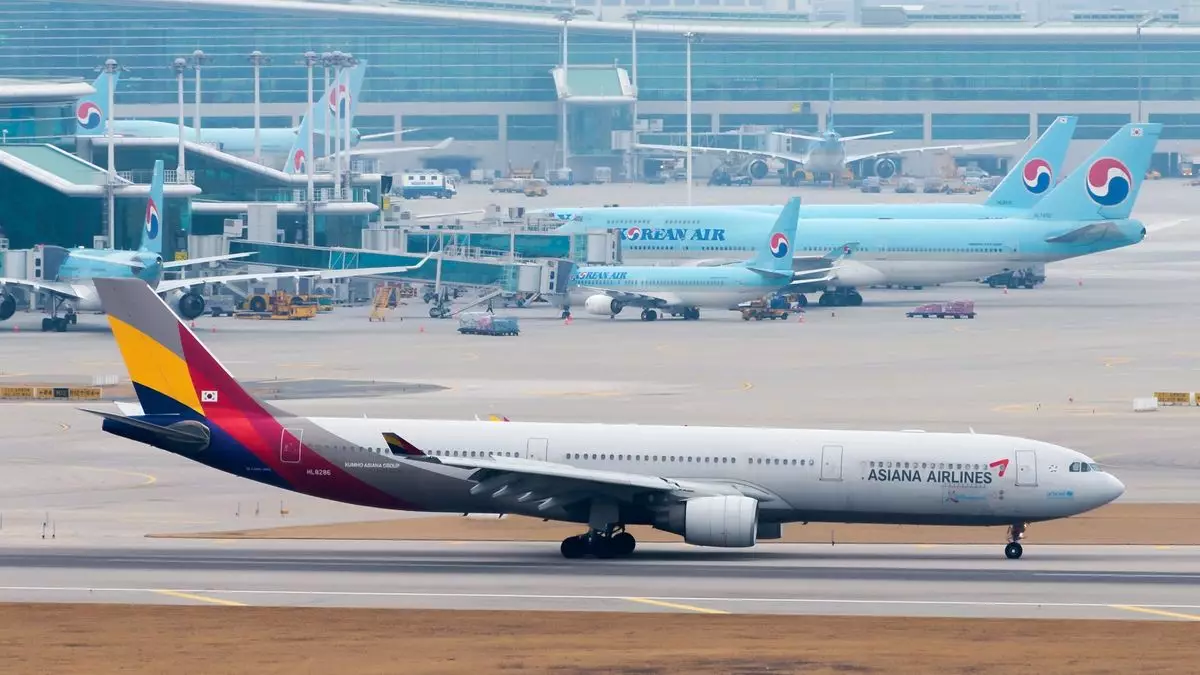In a significant shift in the aviation landscape, Korean Airlines has officially completed its acquisition of Asiana Airlines, marking a pivotal moment for the South Korean airline industry. The deal, valued at $1.3 billion, enables Korean Airlines to gain a control stake of 64% in Asiana, South Korea’s second-largest airline. The merger was originally conceptualized four years ago during the tumultuous period of the Covid-19 pandemic when airlines worldwide struggled to remain solvent. With this agreement now finalized, Korean Airlines has ascended to a new ranking position, now standing as the 11th largest airline globally in terms of available international seats, a dramatic leap from its previous position of 22nd. In stark contrast, Asiana held a modest rank of 40th on the list prior to the merger.
Market Domination
This merger not only transforms market dynamics within South Korea but also firmly positions Korean Airlines as a dominant force in the international arena. Upon merging, the Korean Air Group is projected to command 47% of the South Korean international market, garnering a strategic advantage over competitors. This percentage encompasses total seat capacity contributions from Korean Airlines and Asiana, along with their respective low-cost subsidiaries, Jin Air, Air Busan, and Air Seoul. The integration strategy includes plans for Air Busan and Air Seoul to be absorbed by Jin Air, streamlining operations under a unified brand while keeping the Asiana name afloat for the foreseeable future. This focus on brand management plays a crucial role in retaining customer loyalty during the transition.
The successful closure of this acquisition came shortly after the European Commission granted its approval, further indicating a positive trajectory for the merger. Notably, competition authorities across Japan, China, and several other strategic markets had previously nodded in approval, although the U.S. Department of Justice has yet to offer its verdict. Nevertheless, the decision by Korean Airlines to expedite the transaction suggests anticipatory confidence regarding regulatory acceptance. As the merger was scrutinized, various concessions were requested of Korean Airlines, highlighting the ongoing need for maintaining competitive integrity in the industry. Among these concessions was the leasing of four Boeing 787s to Air Premia, a younger airline seeking to bolster its service against established players on the South Korea-U.S. routes.
As the dust settles on this monumental acquisition, both Korean Airlines and Asiana are poised for expanded service capabilities. Currently, Korean Airlines operates flights to 11 destinations in the U.S., while Asiana services five routes, all originating from Seoul. The introduction of lighter competition in this sector, alongside Air Premia expanding its offerings to Newark, San Francisco, and Los Angeles, bolsters the notion of a dynamic and evolving marketplace. Looking ahead, the focused integration of these two carriers within the next two years will not only redefine corporate structures but may also enhance the travel experience for consumers as efficiencies are realized.
The merger of Korean Airlines and Asiana symbolizes a defining chapter for South Korea’s aviation sector, representing both opportunities and challenges within a highly competitive world market. The actualization of this merger underscores the resilience of the airline industry amid global challenges while laying the groundwork for a more formidable presence on the international stage.

